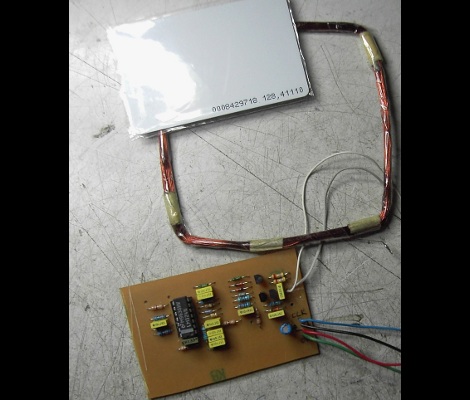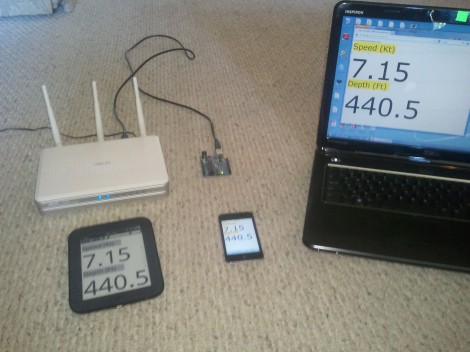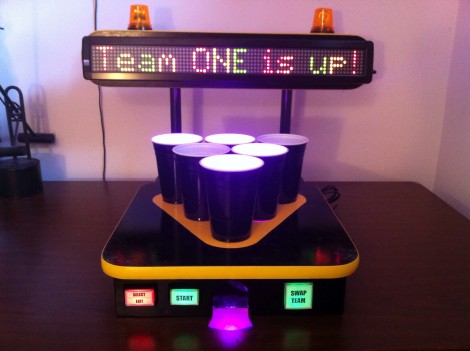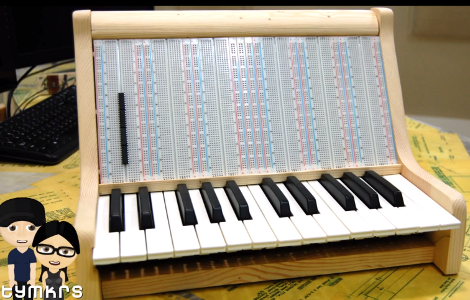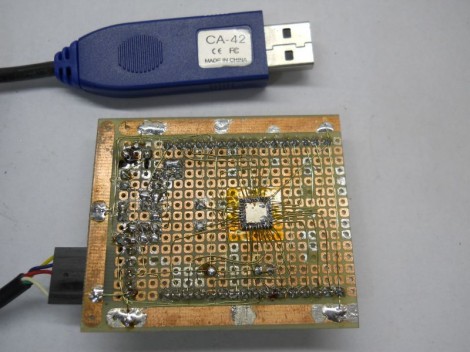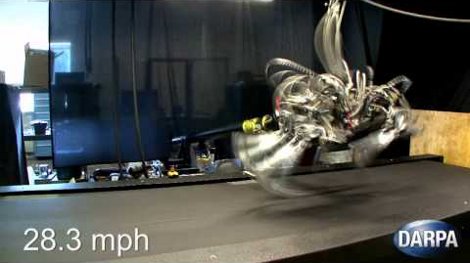
It’s a blur, but you really don’t want to seen this thing coming for you anyway. It’s the latest look at what the folks at Boston Dynamics have been working on under a DARPA contract. They call it the Cheetah robot as it’s the fastest four-legged bot ever developed. The clip after the break shows it breaking the world record over 100 meters… for a human. This isn’t really legitimate since the run is done on a treadmill and the robot is tethered. But it’s still impressive scary.
The Cheetah is a relative of BigDog, another Boston Dynamics robot which we’ve seen several times in the past. BigDog specializes in lifting heavy loads and traversing rough terrain. We don’t think it will be too long before both traits can be “bred” into one device. A lot of times when we feature these robots there are comments about how they invoke images from The Terminator movies. For us this is more along [Michael Bay’s] vision of robots from the Transformers series. It certainly not small enough or fast enough to be seen as an early version of the Rat Thing.
Continue reading “Cheetah Robot Can Run Down Even The Fastest Of Us”

